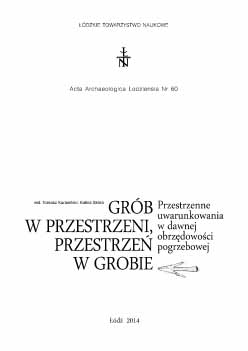Kto się nie leni, zrobi złoto z kamieni – osełki w grobach wczesnego średniowiecza
Kto się nie leni, zrobi złoto z kamieni – whetstones in early medieval graves
Author(s): Anna Wrzesińska, Jacek WrzesińskiSubject(s): Archaeology
Published by: Łódzkie Towarzystwo Naukowe
Keywords: Early Middle Ages; cemetery; whetstones; grave goods; Dziekanowice
Summary/Abstract: Since the dawn of history humans have been interested in using stones for a variety of purposes. The use of rocks and stones as shelters, building material or resource for the production of tools or weapons is a cultural phenomenon. One of the categories of stone objects recorded in graves at early medieval cemeteries includes whetstones. The present study is devoted to whetstones registered in graves at the cemetery at Dziekanowice, site 22 (gmina Łubowo, województwo wielkopolskie). This early medieval necropolis is located on the east shore of Lake Lednica in the direct vicinity of one of the major stronghold centres of the Piast dynasty. The stronghold itself is situated on Ostrów – an island on Lake Lednica. Out of 1585 skeletal graves recorded in situ at the studied cemetery, 847 (53.4%) burials contained altogether 1868 objects considered as grave deposits. In the group of those artifacts were 28 whetstones found in 27 graves (one grave contained 2 whetstones), which account for 3.2 percent of the total number of burials with equipment. In addition, 77 This is a Polish proverb which translates literally as “one who is not lazy will make gold from stones” 7 whetstones were recorded loosely at the border between layer I and II (they were damaged by ploughing), and in settlement features; however, these objects are not included in the study. The majority of graves with whetstones unearthed at the cemetery at Dziekanowice were male burials. As many as 21 graves belonged to men, 5 to women and only one to a child. Previous research and publications on cemeteries do not facilitate an ambiguous interpretation of the function of whetstones recorded in graves, although utilitarian character of these objects is unquestionable. It can also be asserted that whetstones were buried more often in male graves, and most often in adult graves. They occurred both in “richer” burials and in those characterized by modest equipment.
Journal: Acta Archaeologica Lodziensia
- Issue Year: 2014
- Issue No: 60
- Page Range: 197-223
- Page Count: 27
- Language: Polish

